| Performance |
| Capacity in Millions of Packets per Second (mpps) (64-byte packets) |
77.38 |
| Switching Capacity in Gigabits per Second (Gbps) |
104.0 |
| Layer 2 Switching |
| Spanning Tree Protocol |
Standard 802.1d Spanning Tree support
Fast convergence using 802.1w (Rapid Spanning Tree [RSTP]), enabled by default
Multiple Spanning Tree instances using 802.1s (MSTP); 8 instances are supported
Per-VLAN Spanning Tree Plus (PVST+) and Rapid PVST+ (RPVST+); 126 instances are supported
|
| Port grouping/link aggregation |
Support for IEEE 802.3ad Link Aggregation Control Protocol (LACP)
- Up to 8 groups
- Up to 8 ports per group with 16 candidate ports for each (dynamic) 802.3ad link aggregation
|
| VLAN |
Support for up to 4,094 VLANs simultaneously
Port-based and 802.1Q tag-based VLANs; MAC-based VLAN; protocol-based VLAN; IP subnet-based VLAN
Management VLAN
Private VLAN with promiscuous, isolated, and community port
Private VLAN Edge (PVE), also known as protected ports, with multiple uplinks
Guest VLAN, unauthenticated VLAN
Dynamic VLAN assignment via RADIUS server along with 802.1x client authentication
CPE VLAN
|
| Voice VLAN |
Voice traffic is automatically assigned to a voice-specific VLAN and treated with appropriate levels of QoS. Auto voice capabilities deliver network wide zero-touch deployment of voice endpoints and call control devices |
| Multicast TV VLAN |
Multicast TV VLAN allows the single multicast VLAN to be shared in the network while subscribers remain in separate VLANs. This feature is also known as Multicast VLAN Registration (MVR) |
| VLAN Translation |
Support for VLAN One-to-One Mapping. In VLAN One-to-One Mapping, on an edge interface customer VLANs (C-VLANs) are mapped to service provider VLANs (S-VLANs) and the original C-VLAN tags are replaced by the specified S-VLAN |
| Q-in-Q |
VLANs transparently cross a service provider network while isolating traffic among customers |
| Selective Q-in-Q |
Selective Q-in-Q is an enhancement to the basic Q-in-Q feature and provides, per edge interface, multiple mappings of different C-VLANs to separate S-VLANs
Selective Q-in-Q also allows configuring of Ethertype (Tag Protocol Identifier [TPID]) of the S-VLAN tag
Layer 2 protocol tunneling over Q-in-Q is also supported
|
| Generic VLAN Registration Protocol (GVRP)/Generic Attribute Registration Protocol (GARP) |
Generic VLAN Registration Protocol (GVRP) and Generic Attribute Registration Protocol (GARP) enable automatic propagation and configuration of VLANs in a bridged domain |
| Unidirectional Link Detection (UDLD) |
UDLD monitors physical connection to detect unidirectional links caused by incorrect wiring or cable/port faults to prevent forwarding loops and black holing of traffic in switched networks |
| Dynamic Host Configuration Protocol (DHCP) Relay at Layer 2 |
Relay of DHCP traffic to DHCP server in different VLAN; works with DHCP Option 82 |
| Internet Group Management Protocol (IGMP) versions 1, 2, and 3 snooping |
IGMP limits bandwidth-intensive multicast traffic to only the requesters; supports 2K multicast groups (source-specific multicasting is also supported) |
| IGMP Querier |
IGMP querier is used to support a Layer 2 multicast domain of snooping switches in the absence of a multicast router |
| Head-of-Line (HOL) blocking |
HOL blocking prevention |
| Loopback Detection |
Loopback detection provides protection against loops by transmitting loop protocol packets out of ports on which loop protection has been enabled. It operates independently of STP |
| Layer 3 |
IPv4 routing
- Wirespeed routing of IPv4 packets
- Up to 990 static routes and up to 128 IP interfaces
IPv6 routing
Layer 3 Interface
-Configuration of Layer 3 interface on physical port, Link Aggregation (LAG), VLAN interface, or loopback interface
Classless Interdomain Routing (CIDR)
Policy-Based Routing (PBR)
DHCP Server
DHCP relay at Layer 3
User Datagram Protocol (UDP) relay
|
| Security |
Secure Shell (SSH) Protocol
Secure Sockets Layer (SSL)
IEEE 802.1X (Authenticator role)
Web-based authentication
STP Bridge Protocol Data Unit (BPDU) Guard
STP Root Guard
STP loopback guard
DHCP snooping
IP Source Guard (IPSG)
Dynamic ARP Inspection (DAI)
IP/MAC/Port Binding (IPMB)
Secure Core Technology (SCT)
Secure Sensitive Data (SSD)
Trustworthy systems
Private VLAN
Layer 2 isolation Private VLAN Edge (PVE) with community VLAN
Port security
RADIUS/TACACS+
RADIUS accounting
Storm control
DoS prevention
Multiple user privilege levels in CLI
ACLs Support for up to 1,024 rules
|
| Management |
Web user interface
SNMP
Remote Monitoring (RMON)
IPv4 and IPv6 dual stack
Firmware upgrade
Port mirroring
VLAN mirroring
DHCP (options 12, 66, 67, 82, 129, and 150)
Secure Copy (SCP)
Autoconfiguration with Secure Copy (SCP) file download
Text-editable config files
Smartports
Auto Smartports
Textview CLI
Cloud services
Embedded Probe for Cisco Business Dashboard
Cisco Network Plug and Play (PnP) agent
Localization
Login banner
Other management
|
| Power over Ethernet (PoE) |
| Power Dedicated to PoE |
740W |
| Number of Ports That Support PoE |
48 |
| Power consumption |
| System Power Consumption |
110V=73.79W
220V=74.03W |
| Power Consumption (with PoE) |
110V=886.42W
220V=859.50W |
| Heat Dissipation (BTU/hr) |
3,024.59 |
| Hardware |
| Total System Ports |
52 Gigabit Ethernet |
| RJ-45 Ports |
48 Gigabit Ethernet |
| Combo Ports(RJ 45 + Small form-factor pluggable [SFP]) |
4 SFP |
| Console port |
Cisco Standard mini USB Type-B / RJ45 console port |
| USB slot |
USB Type-A slot on the front panel of the switch for easy file and image management |
| Buttons |
Reset button |
| Cabling type |
Unshielded Twisted Pair (UTP) Category 5e or better for 1000BASE-T |
| LEDs |
System, Link/Act, PoE, Speed |
| Flash |
256 MB |
| CPU |
800 MHz ARM |
| Packet buffer |
3 MB |
| Environmental |
| Unit dimensions (W x H x D) |
445 x 350 x 44 mm (17.5 x 13.78 x 1.73 in) |
| Unit weight |
5.82 kg (12.83 lb) |
| Power |
100-240V 50-60 Hz, internal, universal |
| Certification |
23° to 122°F (-5° to 50°C) |
| Storage temperature |
-13° to 158°F (-25° to 70°C) |
| Operating humidity |
10% to 90%, relative, noncondensing |
| Storage humidity |
10% to 90%, relative, noncondensing |
| Acoustic noise and Mean Time Between Failure (MTBF) |
| FAN |
1 |
| Acoustic Noise |
25°C: 48.7 dBA |
| MTBF at 25°C (hours) |
856,301 |
 Switch
Switch Wifi - Access Point
Wifi - Access Point Firewall
Firewall Router
Router Module Quang
Module Quang![Module Quang Cisco]() Module Quang Cisco
Module Quang Cisco![Module quang HPE]() Module quang HPE
Module quang HPE![Module quang Maipu]() Module quang Maipu
Module quang Maipu![Module quang Brocade]() Module quang Brocade
Module quang Brocade![Module quang Fortinet]() Module quang Fortinet
Module quang Fortinet![Module quang Aruba]() Module quang Aruba
Module quang Aruba![Module quang OEM]() Module quang OEM
Module quang OEM![Module quang Juniper]() Module quang Juniper
Module quang Juniper![Module quang Dell]() Module quang Dell
Module quang Dell![Module quang Palo Alto]() Module quang Palo Alto
Module quang Palo Alto![Module quang Huawei]() Module quang Huawei
Module quang Huawei![Module quang Arista]() Module quang Arista
Module quang Arista![Module quang F5]() Module quang F5
Module quang F5![Module quang H3C]() Module quang H3C
Module quang H3C![Module Quang Allied Telesis]() Module Quang Allied Telesis
Module Quang Allied Telesis![Module quang SonicWall]() Module quang SonicWall
Module quang SonicWall![Module quang Mikrotik]() Module quang Mikrotik
Module quang Mikrotik![Module quang Handar]() Module quang Handar
Module quang Handar Máy chủ (Server)
Máy chủ (Server) Thiết bị lưu trữ (SAN, NAS)
Thiết bị lưu trữ (SAN, NAS) Load Balancing
Load Balancing Video Conferencing
Video Conferencing Phụ kiện máy chủ
Phụ kiện máy chủ Thiết Bị IoT
Thiết Bị IoT Phụ Kiện Mạng
Phụ Kiện Mạng




.png)























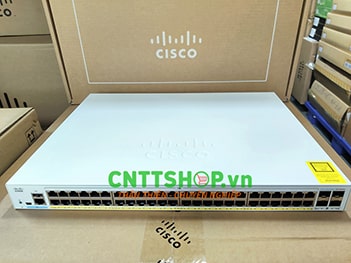
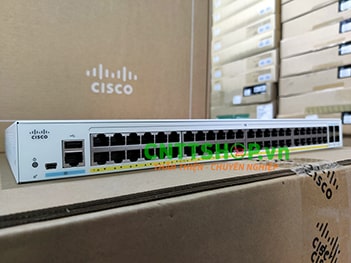
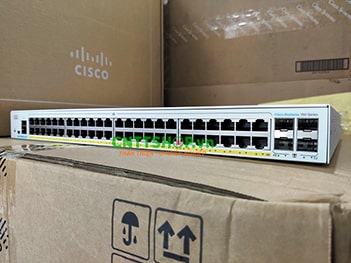
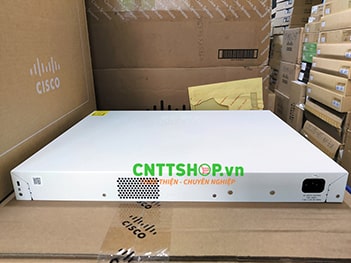
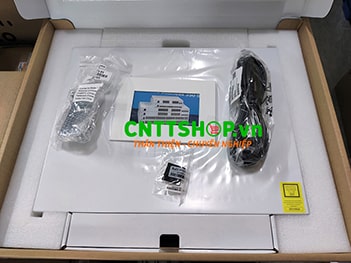
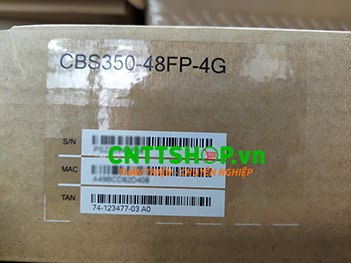













Bạn đang cần tư vấn về sản phẩm: CBS350-48FP-4G-EU ?
Chào anh!
Cảm ơn anh đã quan tâm tới tới sản phẩm, và sử dụng dịch vụ tại CNTTShop.vn
Báo giá Thiết bị mạng Cisco CBS350-48FP-4G-EU bên em đã gửi vào mail. Quý khách vui lòng check mail và phản hồi giúp em.
Thiết bị chuyển mạch Switch Cisco Business CBS350-48FP-4G-EU có một số tính năng cơ bản layer 3 nhé bạn.
Thiết bị chuyển mạch Cisco Business CBS350-48FP-4G-EU có thể sử dụng đồng thời module Cisco SFP GLC-LH-SMD và GLC-SX-MMD nhé bạn.
Thiết bị chuyển mạch CBS350-48FP-4G-EU là thiết bị lớp (layer) 3